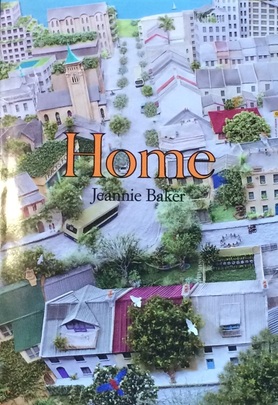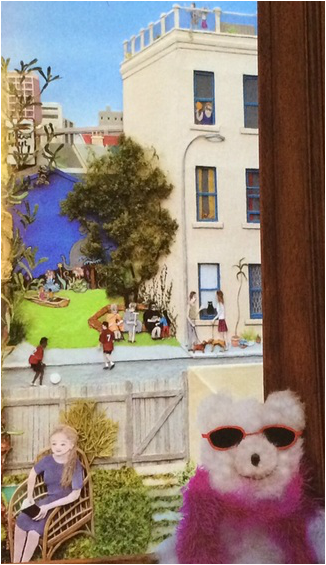0 Comments
Using picture books to integrate Geography and History into Stage 1 – Home by Jeannie Baker8/22/2016
http://www.jeanniebaker.com/book/home/ Introductory activities: Front cover: Does this place look like your neighbourhood or community? Do any of these houses look like your house? Do any of these backyards look like your backyard? Does this look like a nice place to live? Why or why not? The story begins with a pregnant woman and her husband moving into a home, and traces the steps of Tracy, their daughter's, life. The window frame and the wall around it provide clues to show that time is passing - a card celebrating the birth of a new baby, a mug with "I am 4" on it, a note about her 10th birthday, and on it goes. The documenting of time passing provides a opportunity to begin to explore the historical concept of change and continuity and develop skills in sequencing events. This would need to be accompanied with explicit teaching of days of the week and months, and also holidays, events celebrated by students and their families. Activity: Students are provided with images representing Tracy's age and are asked to cut them out and glue them in the correct sequence. Students bring in photos of their childhood with the ages written on them and sequence them to create a timeline. The teacher uses photos of the class or school throughout the year to create a timeline as a wall display. See this pinterest post: https://au.pinterest.com/pin/205547170466044607/ The geographical concept of place is explored in terms of their unique characteristics, the value we place on places, and human influences. We see the way Tracy and her family interact and influence their own backyard, and we get an idea about how they value their place by the activities and experiences they have there. We see how the community begins to value place as the neighbourhood changes into a thriving place for people to relax, interact and work. Activity: Students identify their favourite places around the school and at home. Why do they like these places the most? How do different places make you feel? Are some places safe places? The geographical concept of change is an obvious theme throughout this book. The backyard develops from an empty, barren space into a shady, green oasis. We see the neighbourhood develop from a run down, graffitied area into a green, friendly community. The smash repairs develop into a local park, the demolition of a large building opens up the view of a lake and parkland, old buildings are renovated and new buildings are constructed. We have glimpses of the development of the city, but much of this is hidden by the greening, leafy community. Activity: Students take photographs of a change occurring in their school or local environment (excursion) and label them. This could be repeated several times so that there is a visual record of the change. Student examine historical photos of their suburb and compare them with contemporary photos. A study of the illustrations provides an opportunity to introduce the geographical concept of scale. There is enough visual interest and complexity to simply concentrate on the changes that occur within the family backyard. This could then be extended to looking at what can be seen on the street corner opposite and the main street. This enables discussion about a community, suburb or local scale. In the background of the illustration you can see the city skyline, this could be used to introduce the scale of the town or large city. Activity: Students are given a template with different sized circles. They use the template to draw images of their house, their street, their community, their city, their country and the world (starting from smallest to biggest). This could then be repeated with images of themselves, their immediate family and their extended family. See this pinterest post: https://au.pinterest.com/pin/451274825131466444/ While the story only examines a timespan of approximately 25 years, it does provide a chance to begin to explore the historical concept of changes and continuities in family life and the local community over time. The story comes full circle when the main character gets married and has her own child. We can begin to introduce the historical concept of empathetic understanding by asking why the yard of the family home looked so different when they first moved in to how it looked at the end of the story. Why did Tracy's parents live differently at that time in history to the way they live now? Activity: Students bring in artefacts, or treasured family objects (perhaps a photograph if it is really treasured) and recount family stories. They ask other students questions about their objects. While the geographical concept of sustainability is not expected to be addressed in Stage 1, this story has a clear message encouraging communities to bring back native plants and animals, and to better understand and care for places.
Outcomes:
Communicates an understanding of change and continuity in family life using appropriate historical terms. Identifies and describes significant people, events, places and sites in the local community over time. Inquiry questions: How has family life changed or remained the same over time? How can we show that the present is different from or similar to the past? How do we describe the sequence of time? It would also be quite easy to make links to the English, Maths and Art syllabuses. |
Categories
All
Archives
May 2024
|



